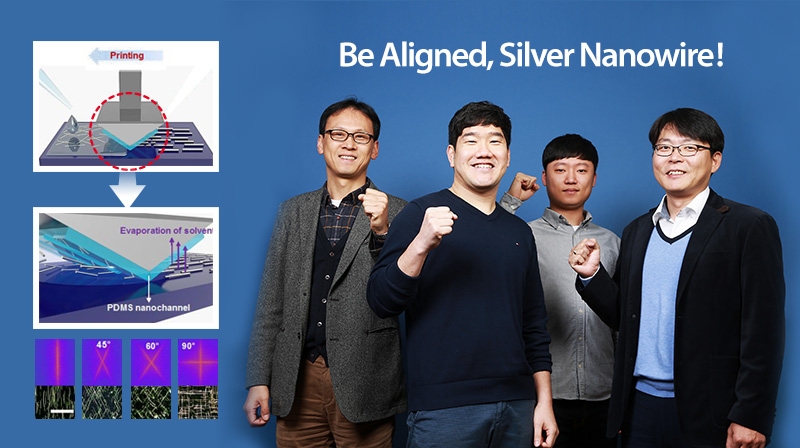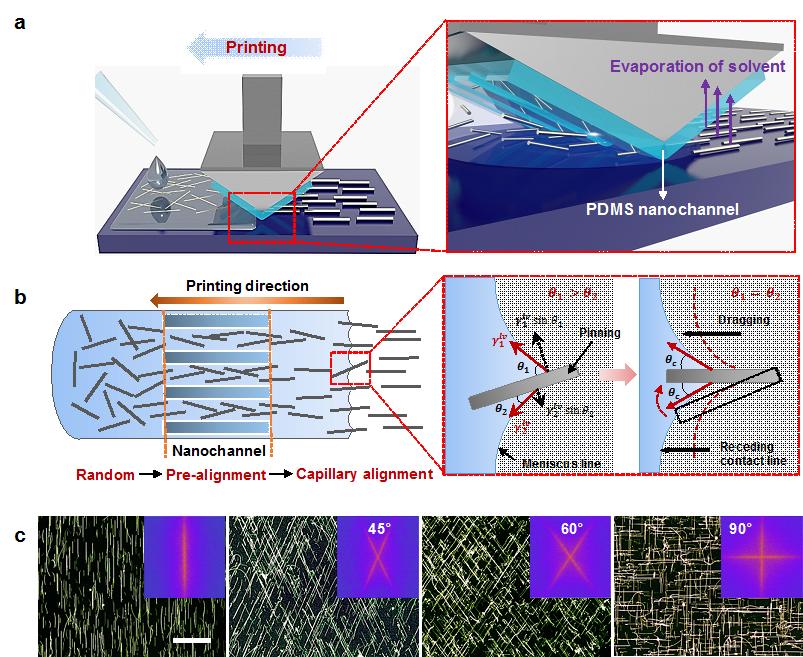A UNIST research team developed the capillary printing technique that can precisely control the silver nanowires. The transparent electrode which is made of silver nanowires has a smooth surface, high electrical conductivity and high transparency. Because of these facts, it is possible to elevate the performance of solar batteries and organic light emitting diodes (OLED) with the use of printing technique of aligning silver nanowires.
Silver Nanowires’ diameter of cross section is nanometer (nm) which is significantly flexible and highly conductive. However, the existing transparent electrodes of silver nanowires usually have rough surfaces, comparatively strong contact resistance between nanowires, and the haze phenomenon*. All of these characters of current existing silver nanowires make difficult to use them actively in the industry.
Mr. Saewon Kang (School of Energy and Chemical Engineering), the lead author of this research says, “We can get higher efficiency if the optoelectronic devices like organic solar cell and OLED’s surfaces are smoother and more transparent. Until now, the silver nanowires were combined disorderly like a web, so the surface was rough and the transparency was not easy to improve. Therefore, there has always been a certain limitation on practicing the printing technique of aligning silver nanowires in the industry.”
Prof. Hyunhyub Ko (School of Energy and Chemical Engineering) explains, “The transparent electrodes with a use of aligned nanowire network could control the linking structure of the electrical current more easily, so it is more likely to develop high performance transparent electrodes.”
The research team applied its newly developed electrodes on the flexible organic solar battery. Another lead author of this reseasrch, Mr. Taehyo Kim (School of Energy and Chemical Engineering), says, “So far, the newly developed solar battery’s efficiency can be considered as the highest compared to other existing solar batteries with the use of silver nanowires.”
Prof. Jin Young Kim (School of Energy and Chemical Engineering) says, “In the near future, it will be possible to apply this technology of aligning silver nanowires to the smart sensors, wearable equipment, flexible touch panels, and display devices.”
This research outcome has been introduced on Nano Letters which is the world famous journal in the field of nanotechnology. It was sponsored by Ministry of Science, ICT and Future Planning’s Global Frontier Business and Ministry of Trade, Industry and Energy’s Korea Institute of Energy Technology Evaluation And Planning.
*Haze- An atmospheric phenomenon where dust, smoke and other dry particles obscure the clarity of the sky.













